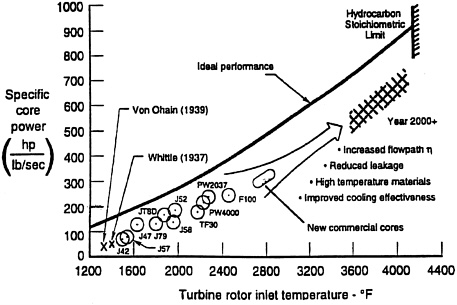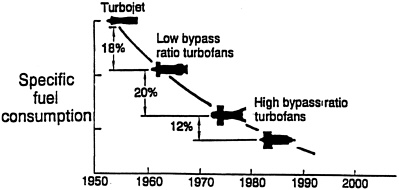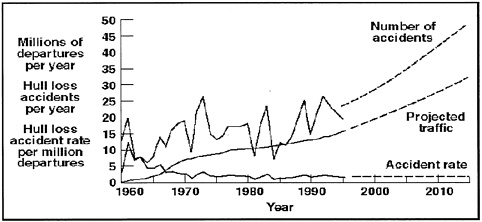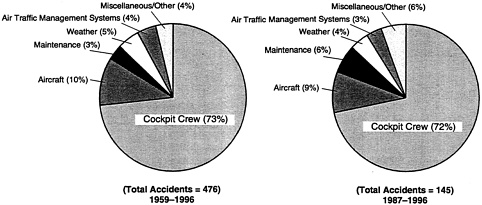NOTICE: The project that is the subject of this report was approved by the Governing Board of the National Research Council, whose members are drawn from the councils of the National Academy of Sciences, the National Academy of Engineering, and the Institute of Medicine. The members of the committee responsible for the report were chosen for their special competencies and with regard for appropriate balance.
This report has been reviewed by a group other than the authors according to procedures approved by a Report Review Committee consisting of members of the National Academy of Sciences, the National Academy of Engineering, and the Institute of Medicine.
The National Academy of Sciences is a private, nonprofit, self-perpetuating society of distinguished scholars engaged in scientific and engineering research, dedicated to the furtherance of science and technology and to their use for the general welfare. Upon the authority of the charter granted to it by the Congress in 1863, the Academy has a mandate that requires it to advise the federal government on scientific and technical matters. Dr. Bruce M. Alberts is president of the National Academy of Sciences.
The National Academy of Engineering was established in 1964, under the charter of the National Academy of Sciences, as a parallel organization of outstanding engineers. It is autonomous in its administration and in the selection of its members, sharing with the National Academy of Sciences the responsibility for advising the federal government. The National Academy of Engineering also sponsors engineering programs aimed at meeting national needs, encourages education and research, and recognizes the superior achievements of engineers. Dr. William A. Wulf is president of the National Academy of Engineering.
The Institute of Medicine was established in 1970 by the National Academy of Sciences to secure the services of eminent members of appropriate professions in the examination of policy matters pertaining to the health of the public. The Institute acts under the responsibility given to the National Academy of Sciences by its congressional charter to be an adviser to the federal government and, upon its own initiative, to identify issues of medical care, research, and education. Dr. Kenneth I. Shine is president of the Institute of Medicine.
The National Research Council was organized by the National Academy of Sciences in 1916 to associate the broad community of science and technology with the Academy's purposes of furthering knowledge and advising the federal government. Functioning in accordance with general policies determined by the Academy, the Council has become the principal operating agency of both the National Academy of Sciences and the National Academy of Engineering in providing services to the government, the public, and the scientific and engineering communities. The Council is administered jointly by both Academies and the Institute of Medicine. Dr. Bruce M. Alberts and Dr. William A. Wulf are chairman and vice chairman, respectively, of the National Research Council.
This study was supported by Contract No. NASW-4938 between the National Academy of Sciences and the National Aeronautics and Space Administration. Any opinions, findings, conclusions, or recommendations expressed in this publication are those of the author(s) and do not necessarily reflect the view of the organizations or agencies that provided support for the project.
International Standard Book Number: 0-309-06226-8
Available in limited supply from: Aeronautics and Space Engineering Board, HA 292, 2101 Constitution Avenue, N.W., Washington, DC 20418. (202) 334-2855
Additional copies available for sale from:
National Academy Press,
2101 Constitution Avenue, N.W. Box 285, Washington, DC 20055. 1-800-624-6242 or (202) 334-3313 (in the Washington metropolitan area). http://www.nap.edu
Copyright 1998 by the National Academy of Sciences. All rights reserved.
Printed in the United States of America.
Committee to Identify Potential Breakthrough Technologies and Assess Long-Term R&D Goals in Aeronautics and Space Transportation Technology
R. BYRON PIPES, chair,
NAE, Rensselaer Polytechnic Institute, Troy, New York
WILLIAM W. HOOVER, vice chair,
U.S. Air Force (retired), Williamsburg, Virginia
RAMESH K. AGARWAL,
Wichita State University, Wichita, Kansas
JACK L. BLUMENTHAL,
NAE, TRW Space & Defense Sector, Redondo Beach, California
HEINZ GERHARDT,
Northrop Grumman Corporation, Pico Rivera, California
RICHARD S. GOLASZEWSKI,
GRA, Inc., Jenkintown, Pennsylvania
EDWARD M. GREITZER,
NAE, United Technologies Research Center, East Hartford, Connecticut
R. JOHN HANSMAN, JR.,
Massachusetts Institute of Technology, Cambridge
CHANTAL JOUBERT,
The Boeing Company, Long Beach, California
ANN R. KARAGOZIAN,
University of California, Los Angeles
DONALD L. NIELSON,
SRI International, Menlo Park, California
ROBERT J. POLUTCHKO,
Lockheed Martin Aeronautics Sector (retired), Potomac, Maryland
MARTIN POZESKY,
MTP Associates, Potomac, Maryland
RICHARD R. WEISS,
Richard R. Weiss Consultant Services, Palmdale, California
TERRENCE A. WEISSHAAR,
Purdue University, West Lafayette, Indiana
PETER G. WILHELM,
NAE, Naval Research Laboratory, Washington, D.C.
Aeronautics and Space Engineering Board Liaison
WILLIAM H. HEISER,
U.S. Air Force Academy (emeritus), USAF Academy, Colorado (until March 1998)
Aeronautics and Space Engineering Board Staff
David A. Turner, Study Director
George M. Levin, ASEB Director
Marvin Weeks, Administrative Assistant
Aeronautics and Space Engineering Board
WILLIAM W. HOOVER, chair,
U.S. Air Force (retired), Williamsburg, Virginia
A. DWIGHT ABBOTT,
Aerospace Corporation, Los Angeles, California
RUZENA BAJSCY,
NAE, IOM, University of Pennsylvania, Philadelphia
AARON COHEN,
NAE, Texas A&M University, College Station
RAYMOND S. COLLADAY,
Lockheed Martin Astronautics, Denver, Colorado
DONALD C. FRASER,
NAE, Boston University, Boston, Massachusetts
JOSEPH FULLER, JR.,
Futron Corporation, Bethesda, Maryland
ROBERT C. GOETZ,
Lockheed Martin Skunk Works, Palmdale, California
RICHARD GOLASZEWSKI,
GRA, Inc., Jenkintown, Pennsylvania
JAMES M. GUYETTE,
Rolls-Royce North American, Reston, Virginia
FREDERICK HAUCK,
AXA Space, Bethesda, Maryland
BENJAMIN HUBERMAN,
Huberman Consulting Group, Washington, D.C.
JOHN K. LAUBER,
Airbus Service Company, Miami Springs, Florida
DAVA J. NEWMAN,
Massachusetts Institute of Technology, Cambridge
JAMES G. O'CONNOR,
NAE, Pratt & Whitney (retired), Coventry, Connecticut
GEORGE SPRINGER,
NAE, Stanford University, Stanford, California
KATHRYN C. THORNTON,
University of Virginia, Charlottesville
DIANNE S. WILEY,
Northrop Grumman, Pico Rivera, California
RAY A. WILLIAMSON,
George Washington University, Washington, D.C.
Staff
George M. Levin, Director
Preface
IMAGINE THE DAY
Imagine the day when aircraft accidents are an order of magnitude less likely to occur than they are today; when noise levels and emissions by commercial aircraft have been reduced by factors of five and four, respectively; when the throughput of the aviation system in all weather conditions is three times today's capacity; when the cost of air travel has been reduced by 50 percent. Imagine the day when the current development cycle time for aircraft has been reduced by half through the use of next-generation design tools and experimental aircraft programs; when 20,000 general aviation aircraft are produced annually; when travel time to the Far East and Europe has been reduced by half at today's subsonic ticket prices. Imagine the day when the cost of launching a payload into low-Earth orbit has been reduced from $10,000 to $1,000 per pound, and then further reduced from $1,000 to $100 per pound.
This vision of the future of air and space transportation reflects the National Aeronautics and Space Administration's (NASA) 10 national goals for aeronautics and space transportation technology in the second decade of the twenty-first century. The task undertaken in this study was to identify revolutionary or breakthrough technologies that could provide the foundation for these achievements. These concepts and technologies also address the future needs and opportunities identified in the National Research Council (NRC) report, Maintaining U.S. Leadership in Aeronautics: Scenario-Based Strategic Planning for NASA's Aeronautics Enterprise (NRC, 1997). A third objective of the study was to assess the feasibility of achieving NASA's 10 goals through either evolutionary or revolutionary developments in technology.
BREAKTHROUGHS ARE REQUIRED
The consensus of the NRC committee and additional experts consulted by the committee during this study is that breakthrough technological capabilities will be required to achieve the vision described in NASA's goals. Consider the past increases in the core power of jet engines, beginning with the 50 hp/lb/sec Von Ohain engines of 1939 and culminating with the F100 engine, with power levels in excess of 250 hp/lb/sec. Because core power is limited by the hydrocarbon stoichiometric limit of approximately 900 hp/lb/sec for current fuels, future advances to achieve the NASA goals for aircraft technology will require revolutionary breakthroughs to reach higher power levels (see Figure P-1).

FIGURE P-1 Gas turbine engine core horsepower per pound of core flow versus turbine inlet temperature (showing increase in power enabled by higher turbine temperature capability). The curve marked "Ideal performance" represents the ideal Brayton cycle at maximum work per unit mass flow. Source: Meece, C.E. 1995. Gas Turbine Technologies of the Future. Paper presented at the 12th International Symposium on Air-Breathing Engines, September 10–15, 1995, Melbourne, Australia.
As core power has increased, specific fuel consumption for the turbine engine has been reduced by more than 50 percent from the 1950s to the 1980s. However, further reductions essential to meet the goals for flight economies may not be possible through evolutionary improvements (see Figure P-2).

FIGURE P-2 History of thrust specific fuel consumption (unit of fuel consumed per unit of thrust produced). The configuration changes indicate the trend towards higher bypass ratio, resulting in higher propulsive efficiency. Source: Pratt & Whitney.
Launch vehicle services for access to low Earth orbit cost anywhere from $1 million to $1 billion per launch and have never provided customers with launch prices as low as $1,000/lb (see Table P-1). Therefore, reaching this goal and moving beyond it to the goal of $100/lb will require significant breakthroughs in technology.
Table P-1 Approximate Cost per Pound for Major U.S. Launch Vehicles
|
Vehicle |
Cost Per Pound |
|
|
|
Low Earth Orbit |
Geosynchronous Earth Orbit |
|
Delta II |
$4,500 |
$25,000 |
|
Atlas IIA |
$5,800 |
$29,000 |
|
Titan III |
$5,000 |
$28,000 |
|
Titan IV-SRMU |
||
|
No Upper Stage |
$4,600 |
— |
|
Centaur (upper stage) |
— |
$26,000 |
|
Source: Dawson, T. 1994. Perspectives on U.S. Space Launch Systems—A Staff Background Paper. Washington, D.C.: Subcommittee on Space, Committee on Science, Space and Technology, U.S. House of Representatives. |
||
The accident rate characterized by hull losses for commercial aircraft has not changed significantly since 1970 (see Figure P-3). Yet air traffic is projected to double by the second decade of the twenty-first century. Unless new technologies are introduced, the number of aircraft accidents can also be expected to increase. The primary cause of accidents is flight deck crew error (see Figure P-4). Thus, man-machine interactions and improved pilot situational awareness are promising areas for safety improvements.

FIGURE P-3 The safety challenge. Source: NASA.

FIGURE P-4 Primary causal factors in worldwide aircraft accidents resulting in total hull loss.
Source: The Boeing Company.
INTEGRATION VERSUS BREAKTHROUGHS
Although these examples illustrate the need for breakthroughs in the development of supporting technologies, the committee believes that the integration of existing mature technologies could also contribute to meeting NASA's goals. For example, as we enter the "Information Age," the power of computer simulation and the integration of existing computer-based modeling technologies has become synergistic. Yet there is a growing need to properly validate and certify these design tools. Thus, the science of technology integration will require substantial attention from NASA and the aerospace industry.
R. Byron Pipes, chair
William W. Hoover, vice chair
Committee to Identify Potential Breakthrough Technologies and Assess Long-Term R&D Goals in Aeronautics and Space Transportation Technology
Acknowledgments
This report has been reviewed in draft form by individuals chosen for their diverse perspectives and technical expertise, in accordance with procedures approved by the NRC's Report Review Committee. The purpose of this independent review is to provide candid and critical comments that will assist the authors and the NRC in making the published report as sound as possible and to ensure that the report meets institutional standards for objectivity, evidence, and responsiveness to the study charge. The content of the review comments and draft manuscript remain confidential to protect the integrity of the deliberative process. We wish to thank the following individuals for their participation in the review of this report:
Laurence Adams, NAE, Martin Marietta Corporation (retired)
Donald Bahr, NAE, General Electric Aircraft Engines (retired)
Eugene Covert, NAE, Massachusetts Institute of Technology (emeritus)
John Enders, Flight Safety Foundation (retired)
John Fearnsides, The Mitre Corporation
Donald Hart, Don A. Hart & Associates, Inc.
Arthur Kantrowitz, NAS, NAE, Dartmouth College (emeritus)
Nancy Leveson, University of Washington
Donald Lovell, The Boeing Company (retired)
Victor Riley, Honeywell Technology Center
Chester Whitehair, The Aerospace Corporation (retired)
While the individuals listed above have provided constructive comments and suggestions, it must be emphasized that responsibility for the final content of this report rests entirely with the authoring committee and the institution.
The committee would also like to thank each individual and organization that provided information during this study or participated in the workshop.
List of Tables, Figures, and Boxes
TABLES
|
P-1 |
Approximate Cost per Pound for Major U.S. Launch Vehicles, |
|||
|
ES-1 |
NASA's Goals for Aeronautics and Space Transportation Technology and the Recommended Breakthrough Technology Categories, |
|||
|
1-1 |
Robust, Significant, and Noteworthy Needs and Opportunities, |
|||
|
3-1 |
The Six Air Vehicle Technology Thrust Areas and NASA's Eight Air Transportation-Related Goals, |
|||
|
3-2 |
Performance Comparison between the Boeing/NASA BWB and a Baseline Conventional Aircraft Configuration with Equivalent Component Technologies, |
|||
|
4-1 |
The Six Air Transportation System Technology Areas and NASA's Eight Air Transportation-Related Goals, |
|||
|
5-1 |
Approximate Cost per Pound for Major U.S. Launch Vehicles, |
|||
|
6-1 |
NASA's Goals for Aeronautics and Space Transportation Technology and the Recommended Breakthrough Technology Categories, |
FIGURES
|
P-1 |
Gas turbine engine core horsepower per pound of core flow versus turbine inlet temperature, |
|||
|
P-2 |
History of thrust specific fuel consumption, |
|||
|
P-3 |
The safety challenge, |
|||
|
P-4 |
Primary causal factors in worldwide aircraft accidents resulting in total hull loss, |
|||
|
1-1 |
The five scenarios and four dimensions, |
|||
|
3-1 |
Isometric view of the BWB airplane, |
|||
|
3-2 |
NOx and CO formation in gas turbine combustion as a function of temperature, |
|||
|
4-1 |
Primary casual factors for worldwide aircraft accidents resulting in total hull loss, |
BOXES
|
ES-1 |
NASA's Three Pillars and Ten Enabling Technology Goals to Achieve National Priorities in Aeronautics and Space Transportation, |
|||
|
1-1 |
NASA's Three Pillars and Ten Enabling Technology Goals to Achieve National Priorities in Aeronautics and Space Transportation, |
|||
|
2-1 |
NASA's Technology Readiness Levels, |
|||
|
4-1 |
The Original ''Fitts" List for Designing Human-Automation Systems, |















